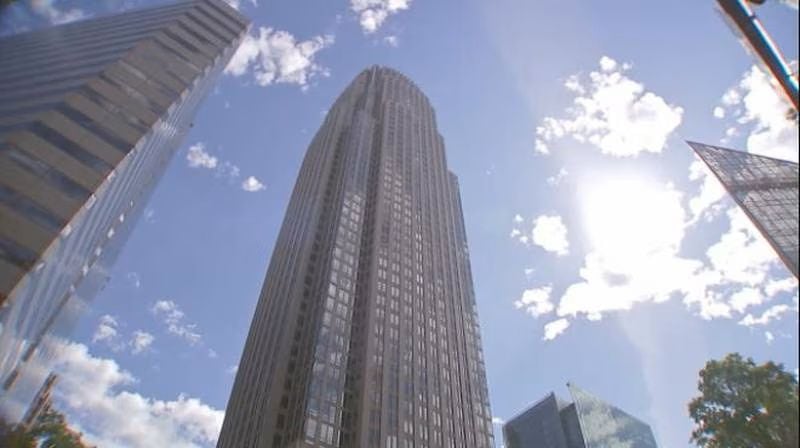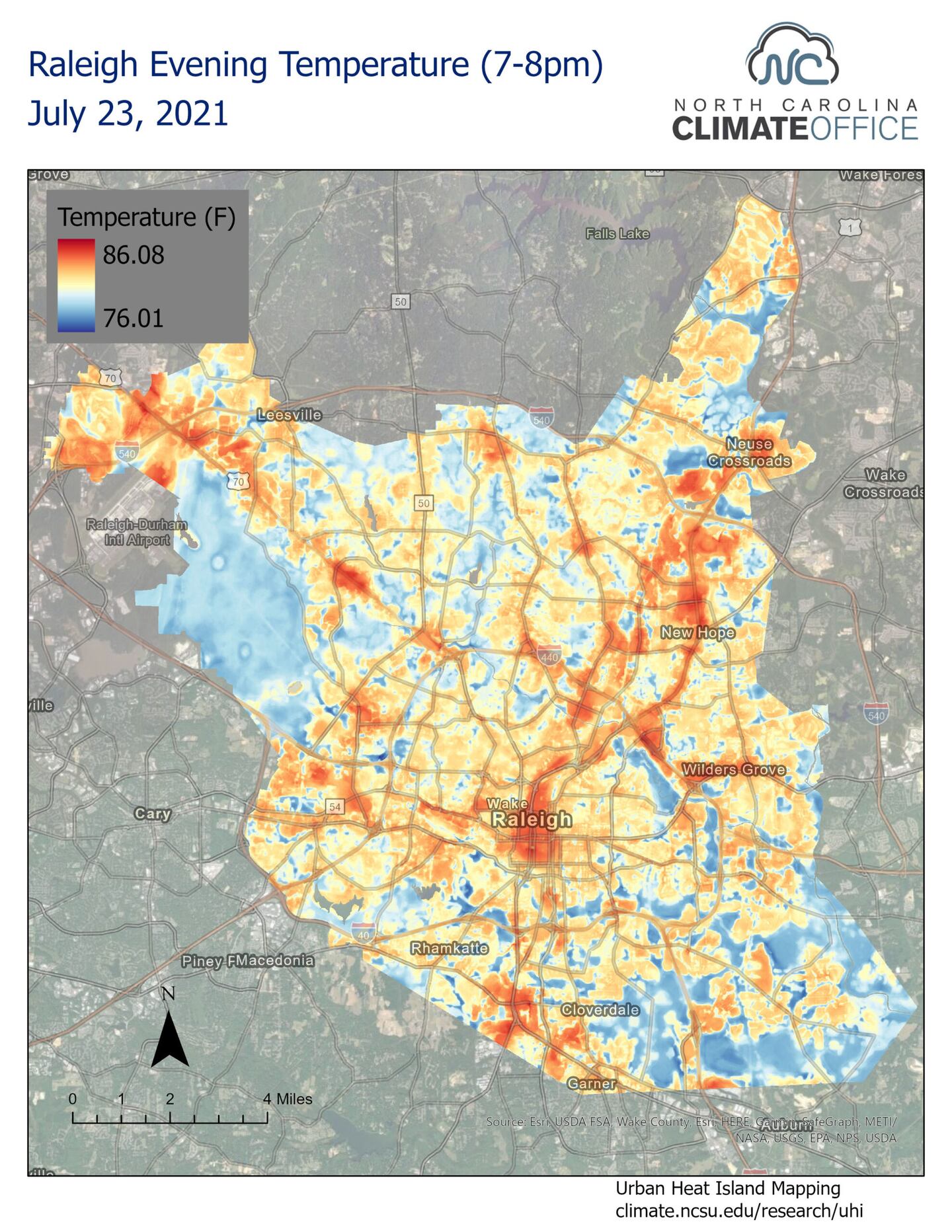CHARLOTTE — It’s not your imagination -- some parts of the city are hotter than others.
It’s due to what’s known as the urban heat island effect, a phenomenon in which surfaces like buildings, road and concrete absorb heat during the day and release that heat into the air when the sun sets, keeping the surrounding area from cooling.
Dr. Matthew Eastin, a UNC Charlotte professor of Meteorology, has studied the phenomenon in Charlotte and some of the surrounding communities. While he’s found the heat island effect is trapping heat across the entire city, he’s planning to expand his research next summer to find Charlotte’s specific hot spots.
“It’ll help us target places to reduce the heat, particularly in places that might have more vulnerable populations,” he said.
The North Carolina State Climate Office conducted a heat mapping campaign in Raleigh and Durham in 2021, revealing a 9-to-10-degree difference in temperature within the cities. Myleigh Neil led the effort along with dozens of community volunteers in both cities.
“It’s a really important topic to look at, both because climate change is greatly exacerbating urban heat islands over time and because urban areas are having growth,” Neil said.
The project’s findings matched most research surrounding heat islands, showing they were concentrated in areas of high density, little green space and large concentrations of impervious surfaces.
“That really does affect people who are living outside, people who maybe don’t have air conditioning,” Neil said.
With the mapping complete, Neil said Raleigh and Durham have been working to mitigate the heat island effect, focusing on those areas highlighted in the project. Raleigh has started treating some of its hottest roads with titanium dioxide, a substance found in sunscreen, that helps reduce heat absorption.
Eastin hopes with more data, Charlotte can apply some of these solutions as well, however groups like TreesCharlotte are working to get a head start.
The organization is focused on preserving and growing Charlotte’s tree canopy, which Jane Singelton-Myers, the executive director, said can be one of the greatest factors in mitigating heat.
“They really address about everything that a human might need,” she said.
Not only do the trees provide shade and prevent heat absorption but evaporation from green spaces helps cool the air.
“As much green space as we can possibly put in the city is the way to offset the heat islands,” Eastin said.
TreesCharlotte has been working with the city and UNC Charlotte to map the city’s tree canopy and target neighborhoods for tree planting, focusing on lower income, low-canopy areas that often correlate with warmer areas due to the heat island effect.
Eastin believes these mitigation efforts will grow more important every year as we continue to face long, hot summers and the grows, impacting more and more people.
“Urban Heat Islands can lead to heat stress and heat stroke especially among people with pre-existing conditions,” he said.
That’s why Singelton-Myers believes there’s no time to waste in getting the right trees in the right places.
“We know that it takes a tree 20 years, 15-20 years to become a canopy tree so we need to be planning now for what the future is going to look like,” she said.
(WATCH: Are tornadoes linked to climate change?)
©2023 Cox Media Group











